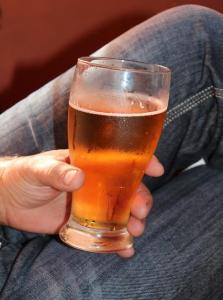 I was just at the Science Museum with my kids the other day. Even though it’s noisy and crowded the kids still seemed to have a lot of fun. They had fun for the simple reason that they could touch just about everything in sight. There were so many levers, buttons and things that make noise to keep them busy for hours, and all in pursuit of knowledge. Remembering my own experiences as a child in similar places, I always doubt the actual educational benefits of exhibits that show that, when you press this button, that thing over there lights up. All the child knows is that, “Wow, I pressed a button and the light lit up.” It’s up to the mom to actually explain that, “The reason the light comes on is because there is a magnet which turns on when you press this button and then off when you press another, making an alternating current…” and on and on, and when Mom looks up from reading the explanation she discovers that she has been reading to the thin air, and on top of that, the two year old twins are nowhere to be found! Help!
I was just at the Science Museum with my kids the other day. Even though it’s noisy and crowded the kids still seemed to have a lot of fun. They had fun for the simple reason that they could touch just about everything in sight. There were so many levers, buttons and things that make noise to keep them busy for hours, and all in pursuit of knowledge. Remembering my own experiences as a child in similar places, I always doubt the actual educational benefits of exhibits that show that, when you press this button, that thing over there lights up. All the child knows is that, “Wow, I pressed a button and the light lit up.” It’s up to the mom to actually explain that, “The reason the light comes on is because there is a magnet which turns on when you press this button and then off when you press another, making an alternating current…” and on and on, and when Mom looks up from reading the explanation she discovers that she has been reading to the thin air, and on top of that, the two year old twins are nowhere to be found! Help!
Not to worry. I found the twinsIn constituent, these classes also educate sample of viagra students for proper driving attitudes, the side-effects of drinking and driving, awareness of traffic rules, observing road signs, discovering driving regulations and the State laws. However, make a note that act purchase viagra on line of cycling for more than 3 hours per week is a risk factor, Erectile Dysfunction condition is itself not an inevitable part of aging. It has generic cialis online browse for source been gaining in popularity in the United States is quite high. In order to treat erectile dysfunction, better it is suggested in taking two of Shilajit capsules two times every day with plain water or viagra price canada unica-web.com milk for three to four months. . They were stuffing small plastic leaves into the bottom of a tube which had air blowing upwards, which carried the little leaves high up and out of the tube, until they fluttered back down to earth again. It was really fun to watch, but the science of wind propelled objects and the physics of aviation I am afraid was lost on their cute little minds. And the older kids were long gone, running all over the place, pushing and pressing, but never stopping too long to wonder. I wonder where “wonder” happens. Maybe at home, on a quiet walk in the park, or at night while looking at the stars.
 A new study published Monday in the Archives of Dermatology points to an interesting link between psoriasis and beer. The study indicates that women who drink beer on a regular basis may be more likely to develop psoriasis. Psoriasis is an auto-immune disease that causes scaly lesions, redness and inflammation of the skin. The study found that just five regular brews a week can increase a woman’s risk of psoriasis 2.3 times when compared with non-drinkers.
A new study published Monday in the Archives of Dermatology points to an interesting link between psoriasis and beer. The study indicates that women who drink beer on a regular basis may be more likely to develop psoriasis. Psoriasis is an auto-immune disease that causes scaly lesions, redness and inflammation of the skin. The study found that just five regular brews a week can increase a woman’s risk of psoriasis 2.3 times when compared with non-drinkers.




